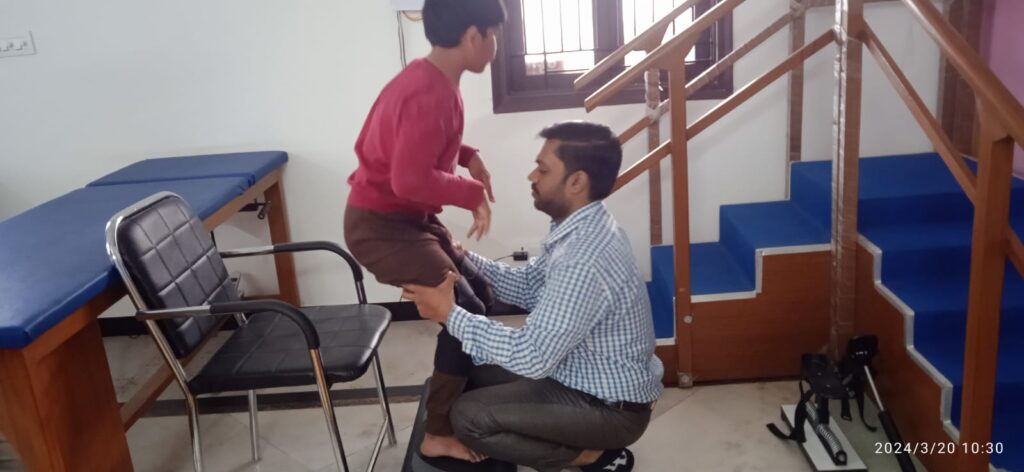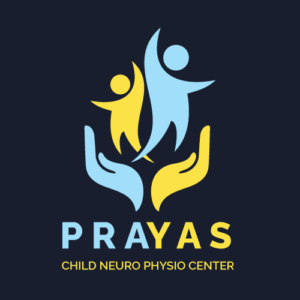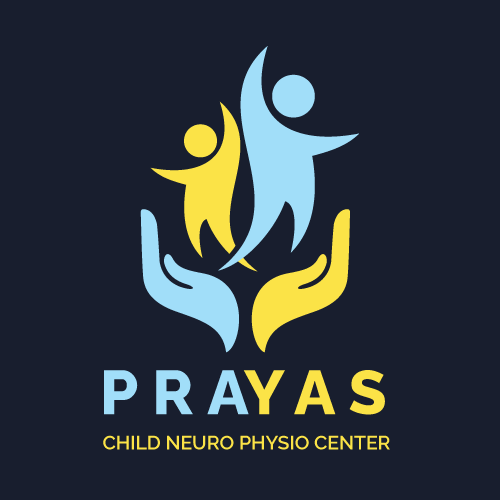
Neuro Development Therapy
Imagine a child struggling to grasp a toy, a teenager tripping over their own feet, or an adult facing difficulty coordinating simple movements. These challenges can be symptoms of neurodevelopmental disorders, affecting the brain’s ability to organize and control movement, sensation, and learning
1.Comprehensive Assessment: The therapy begins with a thorough assessment of the individual’s neurological condition, movement patterns, and functional limitations.
2.Goal Setting: Clear and specific goals are established in collaboration with the individual and their caregivers, focusing on improving motor skills, mobility, and overall function.
3.Customized Treatment Plan: Based on the assessment and goals, a personalized treatment plan is developed. This plan may include a range of interventions, exercises, and therapeutic activities.
4.Handling Techniques: Skilled NDT therapists use specialized handling techniques to facilitate proper movement patterns, improve muscle control, and enhance coordination. The aim is to promote normal motor development.
5.Movement and Mobility Exercises: Individuals may engage in exercises and activities designed to enhance their range of motion, strength, and balance.
6.Functional Activities: Therapists work with individuals on daily functional tasks, such as sitting, standing, walking, reaching, and fine motor skills like grasping objects.
7.Equipment and Assistive Devices: Recommendations may be made for adaptive equipment or assistive devices that can improve independence and mobility, such as orthotics or mobility aids.
8.Family and Caregiver Education: NDT therapists often provide education and training to the individual’s family and caregivers, ensuring consistency and support at home.
9.Regular Progress Monitoring: Progress is regularly assessed, and the treatment plan is adjusted to address changing needs and goals.
10.Promoting Independence: The ultimate aim of NDT is to help individuals achieve greater independence in daily life activities by improving motor function and mobility.
It’s essential to work with qualified NDT therapists, typically physical or occupational therapists, who have received specialized training in this approach. NDT can be particularly beneficial for individuals with conditions such as cerebral palsy, stroke, and other neurological impairments. The therapy can help enhance motor control, improve postural alignment, and promote functional movement, leading to a better quality of life.
Comprehensive Assessment: The therapy begins with a thorough assessment of the individual’s neurological condition, movement patterns, and functional limitations.
Goal Setting: Clear and specific goals are established in collaboration with the individual and their caregivers, focusing on improving motor skills, mobility, and overall function.
Customized Treatment Plan: Based on the assessment and goals, a personalized treatment plan is developed. This plan may include a range of interventions, exercises, and therapeutic activities.
Handling Techniques: Skilled NDT therapists use specialized handling techniques to facilitate proper movement patterns, improve muscle control, and enhance coordination. The aim is to promote normal motor development.
Movement and Mobility Exercises: Individuals may engage in exercises and activities designed to enhance their range of motion, strength, and balance.
Functional Activities: Therapists work with individuals on daily functional tasks, such as sitting, standing, walking, reaching, and fine motor skills like grasping objects.
Equipment and Assistive Devices: Recommendations may be made for adaptive equipment or assistive devices that can improve independence and mobility, such as orthotics or mobility aids.
Family and Caregiver Education: NDT therapists often provide education and training to the individual’s family and caregivers, ensuring consistency and support at home.
Regular Progress Monitoring: Progress is regularly assessed, and the treatment plan is adjusted to address changing needs and goals.
Promoting Independence: The ultimate aim of NDT is to help individuals achieve greater independence in daily life activities by improving motor function and mobility.
It’s essential to work with qualified NDT therapists, typically physical or occupational therapists, who have received specialized training in this approach. NDT can be particularly beneficial for individuals with conditions such as cerebral palsy, stroke, and other neurological impairments. The therapy can help enhance motor control, improve postural alignment, and promote functional movement, leading to a better quality of life.


